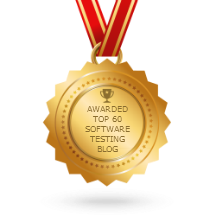A strategy to implement automated checks without losing sight of manual testing
The goal of this post is to show a possible way you can plan test case automation with development in order to automate tests (have automatic checks) as soon as possible, without losing sight of manual testing. The functionalities to be automated will have to be already tested manually prior to beginning.
This raises the question of whether it makes sense to automate testing before the application is ready. There are indeed tools that try to “automate” tests before implementation, as a part of Test Driven Development. The issue is that this can be a little hard to conceive.
Here’s an example of an excerpt of a development plan in which we are working on nine functionalities in three cycles:
The important thing to see in the example is when each task is done for a group of features. For example, we can follow the tasks for F1 , F2 and F3 functionalities. In the first cycle, tests are implemented and designed. In the second, we’re ready to test functionality manually and then automate. In parallel with this, the development team implements the F4, F5 and F6 functions and designs tests for them. In the next cycle, we will have automated tests up and running for F1 , F2 and F3. In turn, we have tests already designed for F4 , F5 and F6, which we will manually execute, and then automate them so that they’re prepared for the following cycles. Note that we are already saving time in test execution, and we are only in cycle 3!
The interesting thing about this plan is that whoever does the automation could do manual testing themselves first and then automate it. This is beneficial because by performing manual tests first, the tester gets to know the functionality and then the automation will be easier and faster. It’s important to decide at this point if the functionality is suitable for automation or if it’s still very “green,” and should be left for a later stage.
The importance of this example is that it shows how to plan implementation and automation of tests. Here I am not considering the design of the implementation, which would have to go one cycle backward regarding implementation. If we follow a V model, this would be a little different, as we would define the tests at the same moment as the requirements and design wouldn’t be considered since its done at the same moment as implementation.
What’s your opinion of this method? Do you have any helpful ideas to share?
Recommended for You
The 4 Most Common Test Automation Challenges (and How to Overcome Them)
How to Avoid False Positives and False Negatives in Test Automation
Tags In


Sofía Palamarchuk, Co-CEO at Abstracta
Related Posts
10 Tips for Choosing an Automation Testing Company
Unlock the secrets to finding an automation testing partner that fits your specific needs, for unparalleled software quality. Ensuring the quality and efficiency of your product is paramount. We understand that finding the right automated testing company can be a daunting task. But it is…
Automatic Checks with Scriptless Tool, Ghost Inspector
Ghost Inspector review: Tool to automate tests without the need for coding skills We just started a new project with a client from Silicon Valley in e-commerce where one of the first things we’re working on is to review their current testing strategy, and within that, their…
Search
Categories
- Acceptance testing
- Accessibility Testing
- AI
- API Testing
- Development
- DevOps
- Fintech
- Functional Software Testing
- Healthtech
- Mobile Testing
- Observability Testing
- Partners
- Performance Testing
- Press
- Security Testing
- Software Quality
- Software Testing
- Test Automation
- Testing Strategy
- Testing Tools
- Work Culture









